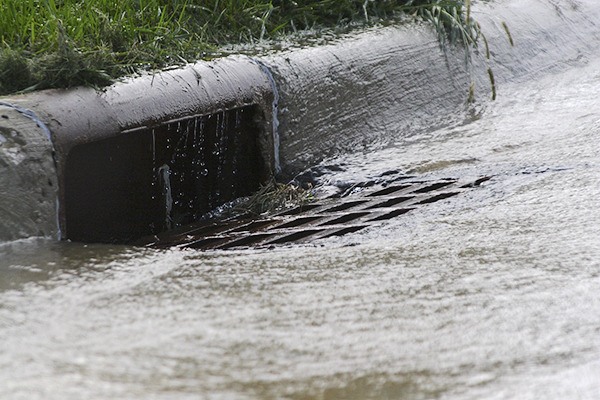In the midst of a snowpack driven drought, followed by a record warm, wet year in Sequim, city officials finalized a plan to manage storm and surface water as a vital resource.
“The city’s first master plan for stormwater addresses current and anticipated needs for managing runoff, surface and ground water quality and quantity, and best management practices — treating stormwater as the vital resource it is to our water-dependent region,” Ann Soule, City of Sequim stormwater stewardship resource manager, wrote in a report for the city planning commission.
The plan is the first of its kind for the city, which is one of the last jurisdictions of both the Olympic and Kitsap peninsulas without a stormwater plan or program. It outlines the importance of storm and surface water and steps to better manage it through programmatic activities and capital projects.
Nine months after the May 2015 draft plan, city officials released the final Storm and Surface Water Master Plan prepared by Herrera Environmental Consultants, Inc., and city staff late February. The Sequim Planning Commission unanimously passed the plan on March 1, moving it one step closer to adoption.
Next, the Sequim City Council is expected to hold a public hearing on the plan at 6 p.m., Monday, April 11.
“The Storm and Surface Water Master Plan’s key goal is to attain compliance with existing local and state requirements,” Soule said. “DOE (Washington State Department of Ecology) is just as enthused about getting this plan done and implemented as we are.”
The plan identifies ways to control runoff and reduce pollution threatening water quality, including Bell Creek, Johnson Creek and Gierin Creek, which are the main drainage basins encompassed by the city and listed as “impaired” waterbodies by the state.
The plan also guides the actions necessary to protect habitat, prepare for population growth, climate change and enhance relationships with water management partners and neighboring entities.
“It gets us in front of the increase in runoff with population growth and more intensive storm events,” Soule said.
To put the plan into action, Soule and her colleagues recommend the first of three tiers (Tier A) be implemented this year through 2018.
Tier A gets us in compliance with our regulations, Soule said. It includes an inspection program and the implementation of high priority recommendations to meet water quality compliance, stormwater system operations and maintenance. Contingent on funding, it also calls for the first of three groups of capital improvement program projects.
Including the cost of capital improvement projects, like the installation an outfall pipe, a stormwater storage facility and the redirection of stormwater to bio-retention cells, funding for Tier A is estimated at $719,500.
Implementing Tier A throughout the next three years, however allows the city to use existing resources (Sewer and Water Utility Funds, supplemented by grants as much as possible) without adding new revenue. Capital improvement projects will be implemented only as grant and loan funding become available, Soule said.
Already, a grant from DOE is slated to initiate the inspection program and the construction of two capital improvement projects late 2016-early 2017.
Moving ahead, city staff plan to report back to the city council at the end of each year to provide an update on activities performed, activities planned, possible impacts to other city programs and changes needed to increase success in terms of achievement of Tier A objectives.
To educate and answer questions about the plan, Soule is available from noon-2 p.m. every Thursday or by appointment at the Interpretive Center, 500 N. Blake Ave.
The Storm and Surface Water Master Plan is available at the Sequim Library, Civic Center or online at www.sequimwa.gov/index.aspx?nid=646.
For more information call 582-5710, email waterinfo@sequimwa.gov or visit www.sequimwa.gov.


